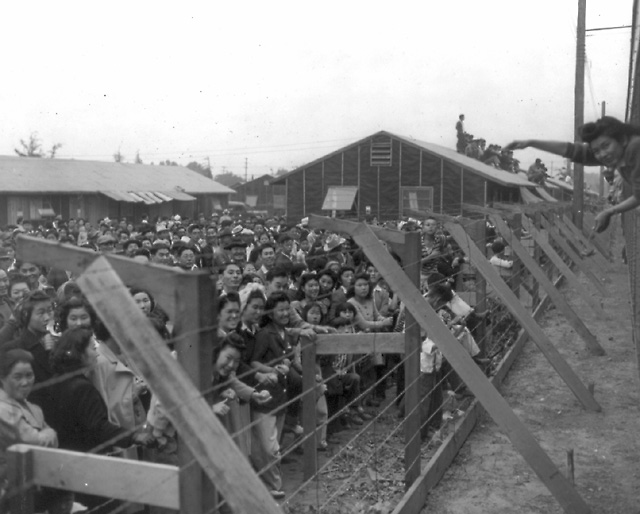 The biggest news this weekend from Arcadia, CA was Zenyatta coming from behind to clinch her 14th win at the Breeders’ Cup Classic at the Santa Anita Race Track. It was actually quite an amazing feat considering how far behind she was. But lost beneath the headlines was the opening of the race track’s new exhibit about the race track’s often forgotten association with Japanese Internment.
The biggest news this weekend from Arcadia, CA was Zenyatta coming from behind to clinch her 14th win at the Breeders’ Cup Classic at the Santa Anita Race Track. It was actually quite an amazing feat considering how far behind she was. But lost beneath the headlines was the opening of the race track’s new exhibit about the race track’s often forgotten association with Japanese Internment.
Signed in February 19th, 1942 by President F.D. Roosevelt, Executive Order 9066 granted military personnel the right to move en masse many Japanese Americans, of which the majority were American citizens, into internment camps for a good two years. The move forced many of these individuals to sacrifice much of their possessions, property, and even family. People like Star Trek star George Takei, Malcolm X’s confidant Yuri Kochiyama, civil activist Richard Aoki and about 120,000 others had their lives shaped by these internment camps. In short, Japanese Internment is seen as a black stain in American history, and is often considered a hypocritical blind move by the American government by many due to its various associations with the Nazi’s concentration camps, but I digress. The most well known of these internment camps is in Manzanar, CA but before much of the interned were forced into Manzanar, they first settled into temporary staging areas held at various stables and race tracks in places like Pomona, Fresno, Salinas, and so on; the most famous of them the Santa Anita Race Track. The exhibit hopes to bring much of the forgotten history of Japanese Internment back into the forefront of our view on World War II, which is generally viewed as the perennial battle in which the good of the Allies defeated the evil of the Axis.
I grew up around the area and often drove by without drawing any connections between the race track and its dark, hidden past. The race track sits right next to a modern mall and when I went to the mall in middle school, I always considered the track to be a relic of the past; mostly because I failed to understand the excitement of horse racing and failed to recognize the significance of the venue to the sport. I guess it would be as if I looked down upon the Rose Bowl simply because I didn’t watch football. I didn’t know of its purpose, let alone its role in 1942. Therefore, I’m excited to visit the exhibit not only because I hope to catch some great exhibits and read some excerpts from primary sources first hand, but also because it gives me a reason to step into a place so heralded by horse racing enthusiasts.








